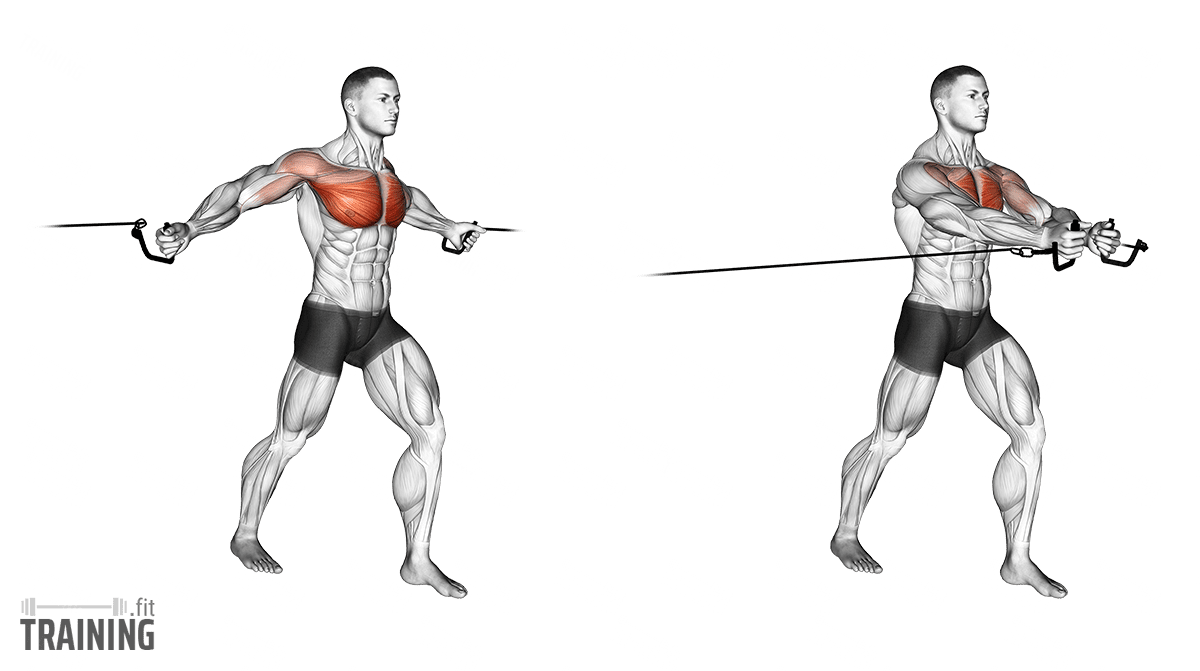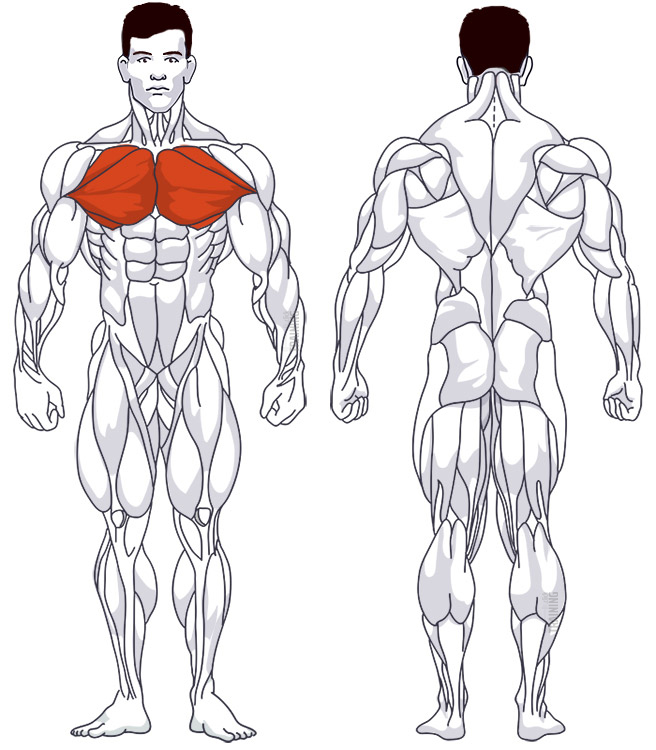Cable Chest Fly
Isolation exercise, Cable pullOverview

Main muscles
- Chest: Large pectoral muscle
(Musculus pectoralis major) - Chest: Small pectoral muscle
(Musculus pectoralis minor)
Training plans
Cable Chest Fly is a suitable substitute for similar exercises in middle chest training or as a supplement to various training plans.
Cable Chest Fly: Basics and alternatives

Involved main muscle groups:
Cable Chest Fly
Cable chest flys are a variation of the machine fly that can also be done using a cable pulley system. While the movement is essentially the same – squeezing the weight in front of your chest with extended arms to activate your chest muscles – you might not see this exercise as often in the gym. To perform cable chest flys, you’ll need a cross cable tower with cables on each side, which are often found in smith machines and are suitable for many exercises. Unfortunately, they’re also frequently occupied, and many gyms might not have too many of them (or even just one).
Still, you should give cable chest flys a try as they serve as an intermediate stage between machine flys and dumbbell flys. With the latter, the movement using dumbbells is less restricted.
Cable chest flys aren’t as beginner-friendly as the machine version because the movement is less strict, requiring more practice. Beginners should first learn the motion on the machine.
Correct execution
Despite being a cable-guided exercise, cable chest flys aren’t easy to master. In the beginning, make sure you have a firm footing.
Remember, this is a chest exercise. Avoid overextending your arms or shoulders in the starting position, as this shifts the focus and can cause long-term shoulder issues.
As a beginner, it’s essential to check your movement in a mirror. Look for a cable pull tower in front of a mirror to ensure you’re centered and executing the movement smoothly and symmetrically.
The cable mount height can often be adjusted on many towers. Higher cables focus more on your middle and lower chest, while lower cables activate your upper chest a bit more.
The exercise execution varies with the cable mount height. The following instructions cover cable chest flys with a high cable pulley. As a general rule, push the handles opposite the direction of the pull.
Video tutorial
Step-by-step instructions
Stand in the middle of the cable pull tower, holding the handles with your arms spread and palms facing forward.
Take a step forward, keeping one leg in front of the other for stabilization. The weight shouldn’t move yet.
Lean your upper body forward slightly, creating a small arch in your back. Your arms should remain extended with elbows slightly bent.
Push the handles forward through your shoulders, keeping your arms extended and elbows minimally bent throughout the movement.
Bring the handles together in front of your body at chest height and hold for a moment. The tension in your chest is at its highest now.
Control your arms as you spread them again, but don’t go too far back so that the tension in your chest isn’t completely lost. The weight you’re moving shouldn’t touch the rest of the weight block until the end of the set.
Common mistakes
One common mistake is an asymmetrical execution. Like many dumbbell exercises, it’s important to check your movement in a mirror when doing cable flys. Long-term asymmetrical execution can lead to joint and posture issues. Use a cable pull tower with a mirror, if possible.
A typical issue is the swinging motion when the weight is too heavy. Many people compensate by using their torso for the initial part of the movement. This also occurs when you spread your arms too much in the starting position. Make sure the weight isn’t too light and maintain tension in your shoulders and chest throughout the set.
Additionally, avoid swinging the weight by performing the movement hastily.
Your arms shouldn’t be fully extended at the end of the pushing movement. Keep your elbows slightly bent during the entire execution, which is easier on the joints and allows for better chest isolation.